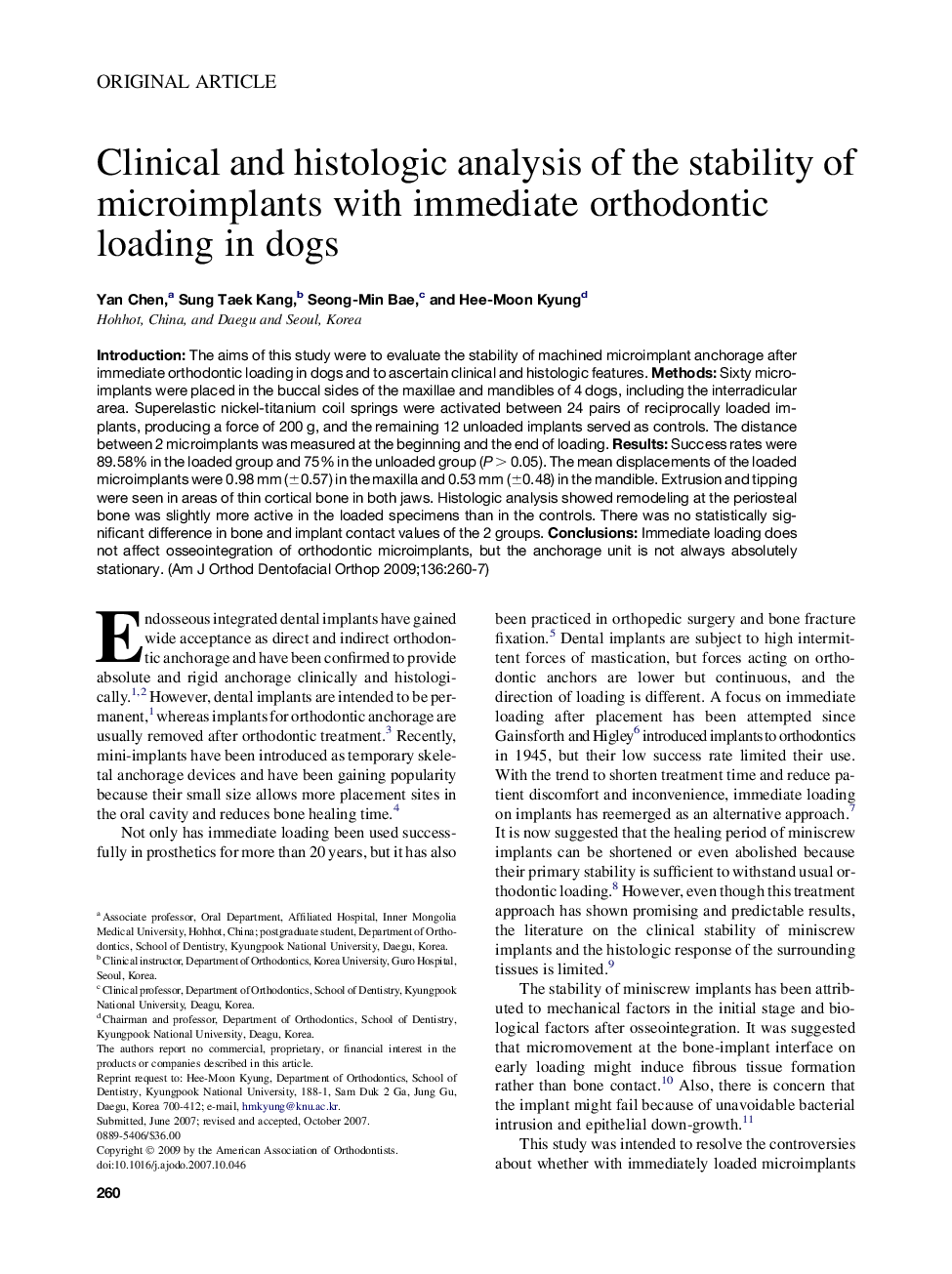| Article ID | Journal | Published Year | Pages | File Type |
|---|---|---|---|---|
| 3118853 | American Journal of Orthodontics and Dentofacial Orthopedics | 2009 | 8 Pages |
IntroductionThe aims of this study were to evaluate the stability of machined microimplant anchorage after immediate orthodontic loading in dogs and to ascertain clinical and histologic features.MethodsSixty microimplants were placed in the buccal sides of the maxillae and mandibles of 4 dogs, including the interradicular area. Superelastic nickel-titanium coil springs were activated between 24 pairs of reciprocally loaded implants, producing a force of 200 g, and the remaining 12 unloaded implants served as controls. The distance between 2 microimplants was measured at the beginning and the end of loading.ResultsSuccess rates were 89.58% in the loaded group and 75% in the unloaded group (P > 0.05). The mean displacements of the loaded microimplants were 0.98 mm (±0.57) in the maxilla and 0.53 mm (±0.48) in the mandible. Extrusion and tipping were seen in areas of thin cortical bone in both jaws. Histologic analysis showed remodeling at the periosteal bone was slightly more active in the loaded specimens than in the controls. There was no statistically significant difference in bone and implant contact values of the 2 groups.ConclusionsImmediate loading does not affect osseointegration of orthodontic microimplants, but the anchorage unit is not always absolutely stationary.
